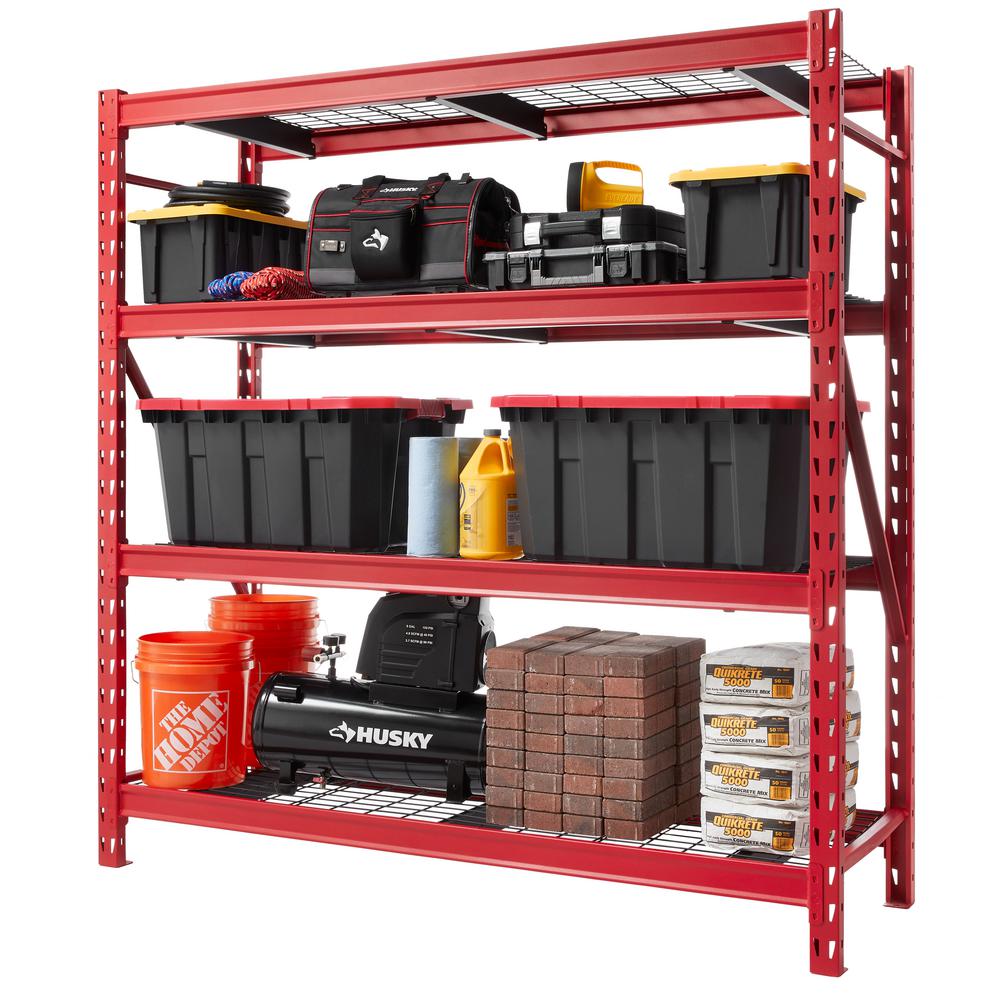Husky Red 4-Tier Heavy Duty Industrial Welded Steel Garage Shelving Unit (77 in. W x 78 in. H x 24 in. D)
Heavy-duty garage shelving rack supports 2500 lbs. per shelf. Shelves are 24 in. deep & adjustable for versatile storage needs. Welded garage shelves are covered by Husky’s lifetime warranty.
Perfect for organizing your garage or workshop, Husky’s Steel I-Beam Shelving Unit measures 78 in. H x 77 in. W x 24 in. D. The 4 adjustable wire shelves provide ample storage space to accommodate a variety of heavy items, each shelf supporting up to 2500 lb. This unit is constructed with steel in a powder-coated finish for durability and strength.
- Each shelf supports up to 2500 lbs. when the weight is evenly distributed
- Instructions included for easy assembly
- Heavy-duty steel construction with red powder-coated finish for lasting durability
- 4-wire shelves provide ample storage for heavy or bulky items such as paint cans, tools, work equipment and more
- Shelves adjust in 3 in. increments to fit any storage needs
- Not intended for outdoor use
- Welded rack matches and coordinates with Husky’s heavy-duty welded cabinet set for a complete garage storage solution
- Backed by a Lifetime Warranty. If your Husky product ever fails, bring it back and we will replace it for free.
Additional information
| Assembled Depth x Height x Width (in.) | 24 x 78 x 77 |
|---|---|
| Shelf Depth x Height x Width (in.) | 24 x 2 x 77 |
| Shelf Weight Capacity (lb) | 2500 |
| Assembly Required | Yes |
| Assembly Type | Full Assembly Required |
| Color Family | Silver |
| Color/Finish | Red |
| Features | Adjustable Shelves,Boltless,NSF Certified |
| Frame Material | Steel |
| Included | No additional components or accessories are included |
| Maximum Space Between Shelves (in.) | 75 |
| Minimum Space Between Shelves (in.) | 3 |
| Number of Shelves | 4 |
| Product Weight (lb.) | 150 |
| Returnable | 90-Day |
| Shelf Color/Finish | Chrome |
| Shelf Material | Metal |
| Shelf Type | Wire |
| Style | Industrial |
| Total Weight Capacity (lb.) | 10000 |
| Manufacturer Warranty | Lifetime |






by Torres
Excellent good price and quality
by Mark
it’s easy to assemble and quality made.
by Jerry
I love it, it’s heavy duty able to hold a lot. ‘was a good invest for my garage.
by Thade
Great heavy duty shelf for the price.
by Awilson
These shelves are awesome!